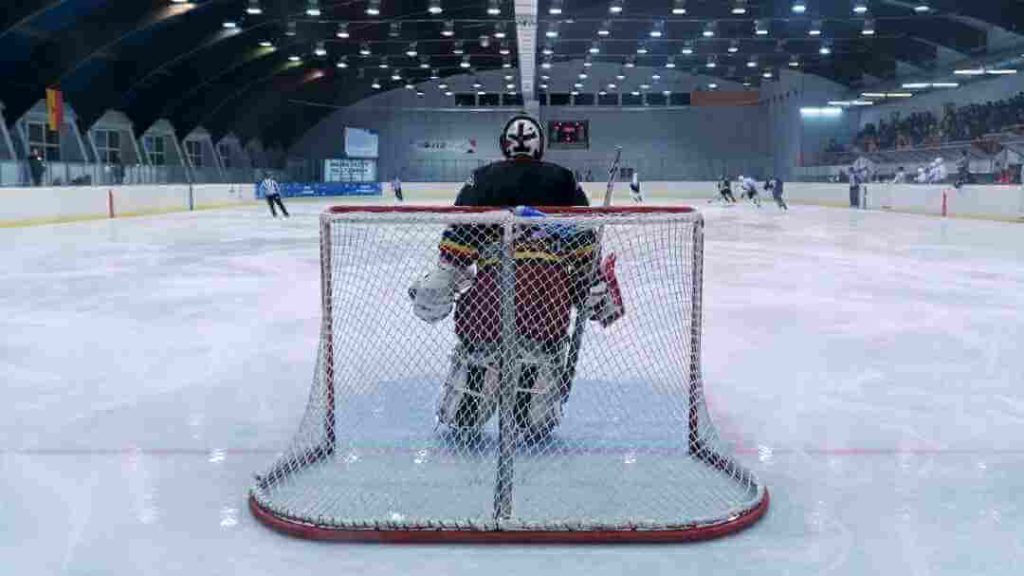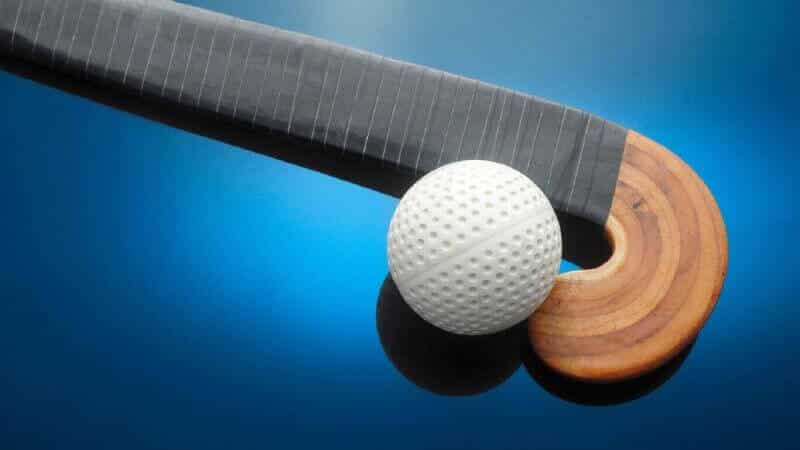
Playing hockey is a recreational activity for people of all ages. And you can play this exciting and fast-moving game on any flat surface. Most of the time, people play on ice rinks.
Hockey is a team sport where two opposing teams skate back and forth on a rink while using sticks to score goals. Getting the puck into the opponent’s net is the game’s goal. Whoever scores the most goals at the end of the game is declared the victor.
If you’re new and want to learn the fundamentals, rules, and strategies for playing hockey, this article, How To Play Hockey For Beginners, is for you. By the time you finish reading, you should know enough about hockey to practice and play on your own or with a team.
What Is Hockey?
Table of Contents
Hockey is an attacking game played by two teams of eleven players each. One team pushes a small, heavy hockey ball toward the other team’s net.
The hockey game begins with a coin toss to determine which team will have the puck in their hands and a pass from the center line. In hockey, each game is 35 minutes long. The winning team is the one that scores the most goals by the end of the second period.
What Are The Basics Of Hockey?
Here are some of the basic rules of hockey that you need to know:
Only your hockey stick can score.
You can’t score with your hands or feet. A goal scored off a skate, or another player’s body is considered valid. Yet, no one can intentionally use their hands or feet in the goal area. The only exception is high-sticking.
When the player makes contact with the puck with their stick at a height of more than their shoulders, your team’s goal does not count.
Body checking and fighting are allowed.
If the other team has the puck, it is acceptable to body-hit them. You can only use one shoulder and can’t reach over anyone’s back. They may penalize you if you hit them when they don’t have the puck in their possession.
Playing dirty is allowed, but there will be consequences for both players. The duration of the penalty differs between professional leagues.
You cannot enter the opposing zone before the puck.
A blue line indicates a zone’s boundary. You can enter the attacking area after the puck has crossed the blue line. They will call offside if you reach their zone before the puck, and you will have to start the next shift with a face-off in the neutral zone.
As a result, you may notice some players straddling the blue line for a few seconds as they wait for the puck to enter the zone and then chase after it.
Only five players and a goalie are allowed on the ice.
There is a maximum of six skaters per team in hockey. However, the goalie can be switched out at any moment. Having an additional player puts more pressure on the opposing team’s defense, which can be helpful in the closing minutes of a game when your team is losing.
But this could backfire if the opposing team takes a shot and misses the net, as there would be no goaltender to prevent the puck from entering the open net.
You can’t shoot the puck from your end to the other.
The opposition team may put much pressure on you and your teammates. When this happens, trying to pass the puck down the ice can be tempting by lifting it high above everyone’s heads.
You can’t do that because it’s called icing and forbidden. Play stops in your zone when this happens, and a face-off begins when the referee blows the whistle.
Penalty Duration
In hockey, a player spends two minutes in the penalty box for a minor penalty and five minutes in the box for a major penalty. During the penalty, only four players and one goalie are on the ice for the player’s team.
How To Play Ice Hockey
- The game begins with a face-off on the center ice. The puck is dropped between two players, and they try to take control of it.
- To score, players must shoot the puck into the opposite team’s net. Players must skate with the puck and try not to let the other team steal it.
- With their sticks, players can pass the puck to their teammates. They can also throw the puck into the offensive zone to get it back and take control.
- If a player makes a mistake, they have to sit in the penalty box for a while, and their team has to play with fewer players.
- A team scores a goal when the puck crosses the goal line and goes into the net. It won’t count as a goal if someone kicks the puck in.
- If the score is tied at the end of regulation time, the game will go into overtime, where the first team to score a goal wins.
- Any time a player scores or assists on a goal, their team gains points. The person who scores the goal receives one point, and the person who helped score the goal also gets one point.
- The winning team scores the most goals. If the score is tied, there will be a shootout where each team gets three chances to score. The game is won by the team that scores the most goals after the shootout.
Tips for Beginners When Starting To Learn Hockey

Buy good gear
Check that you have your skates, helmet with full face shield, shoulder pads, elbow pads, gloves, shin guards, a stick, and a mouthguard.
Learn to skate
Take some lessons to sharpen your skating skills and become a more effective hockey player.
Practice basic skills
Begin with fundamentals like stickhandling, passing, and shooting, and work your way up to more advanced drills and techniques as you gain experience.
Participate in a practice group.
You can improve your skills by joining a practice group to play and practice with others, learn from more experienced players, and get feedback on your progress.
FAQ
Is Hockey Easy To Learn?
Like many other sports, ice hockey is simple but challenging to master. To begin, you need to learn the basics of skating. Every skilled hockey player starts with these fundamentals. Secondly, you must get comfortable using your hockey stick to control the puck. It’s also essential to be able to shoot. You will make quick progress if you steer clear of minor and major penalties so that you can spend as much time skating as possible.
What are ice hockey basics?
Hockey is based on three simple skills: controlling the puck, passing the puck, and shooting the puck. These three categories cover everything a player can do with the puck in their control.
Conclusion
I hope you got the idea about this sport by reading this How To Play Hockey For Beginners article. Learning all the game details could take some time, but beginners can gain the knowledge and experience they need to get started by learning the fundamentals from this article. If you work hard, practice, and are willing to learn, you can get better at this game and start playing full of excitement.
Our More Resources: